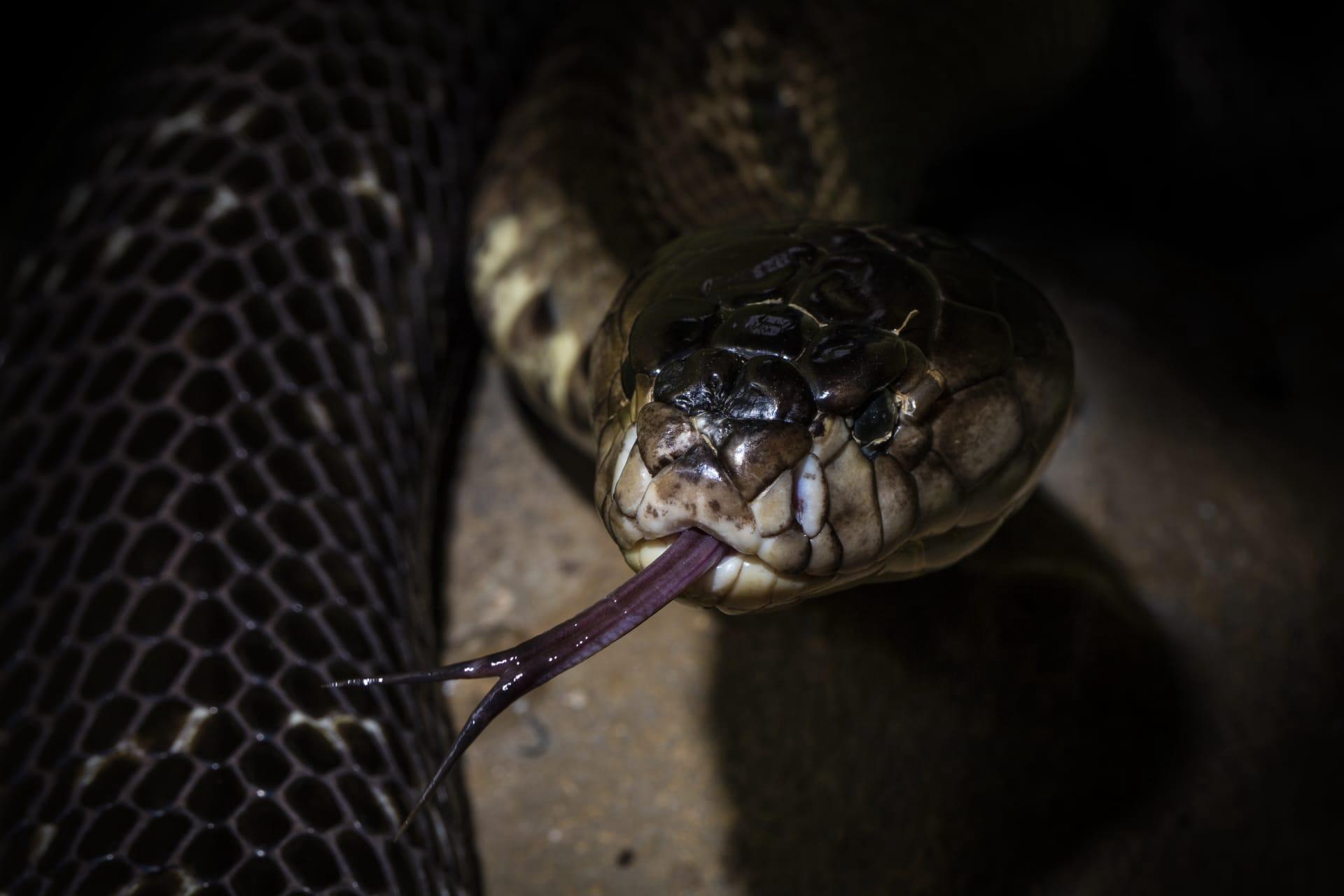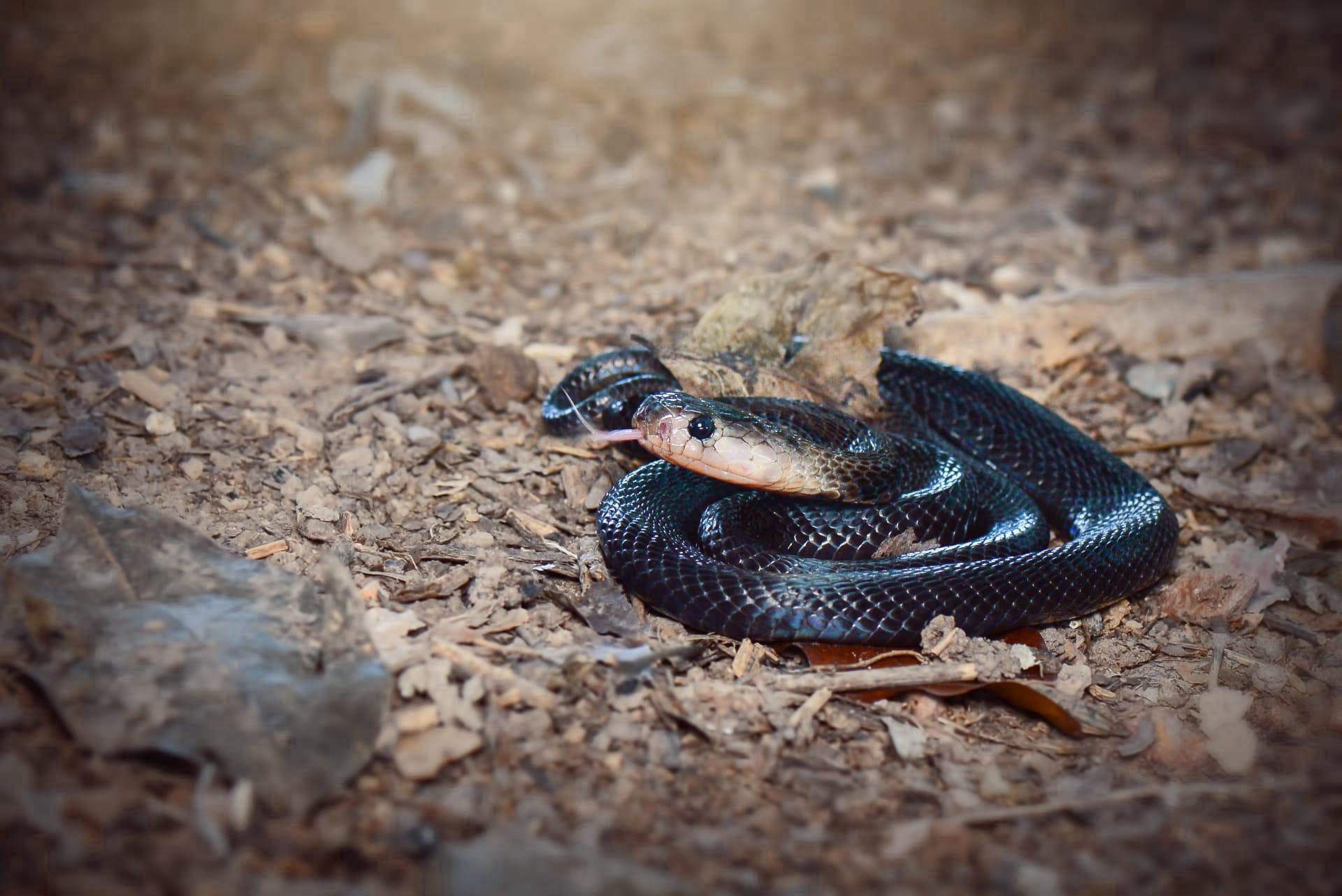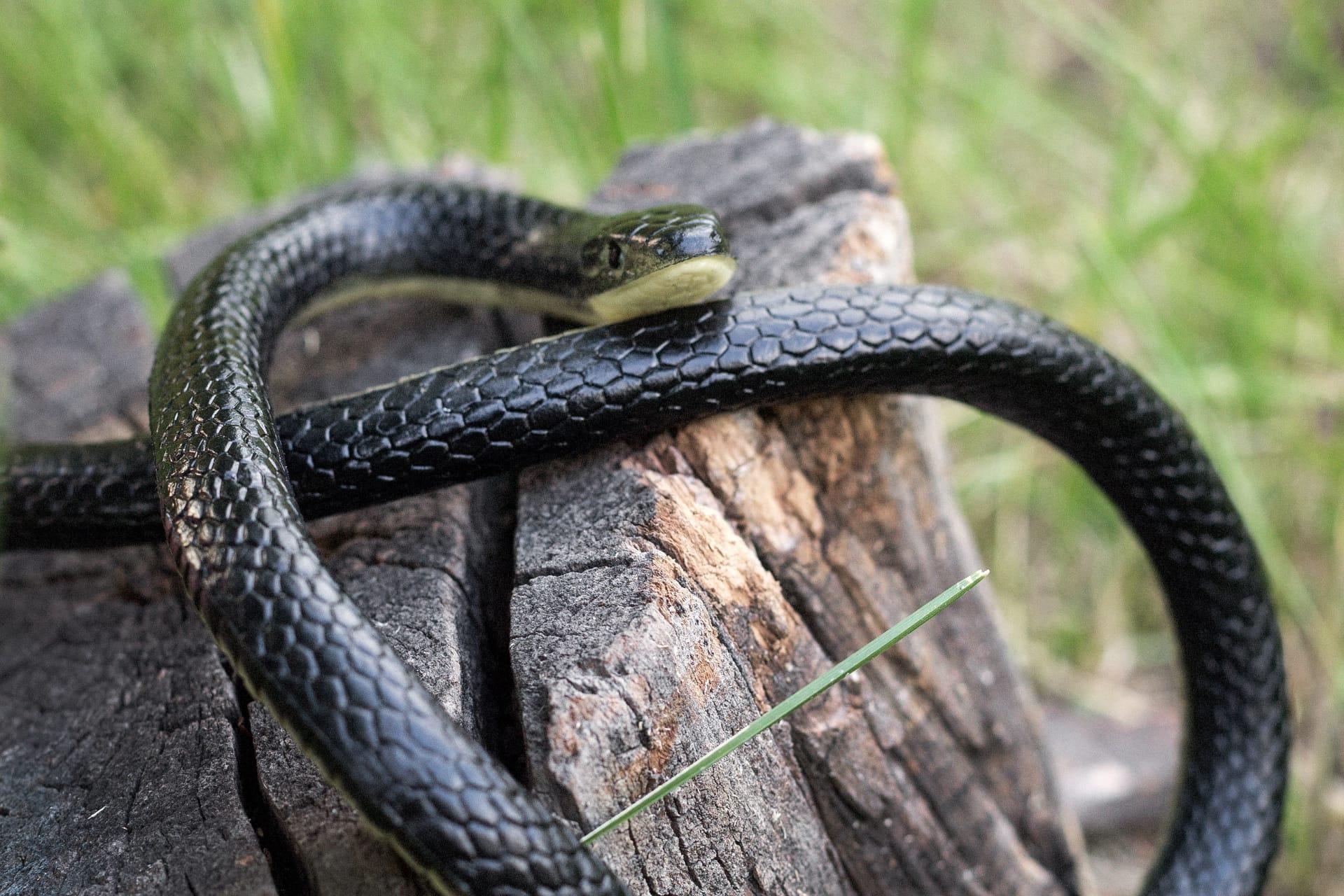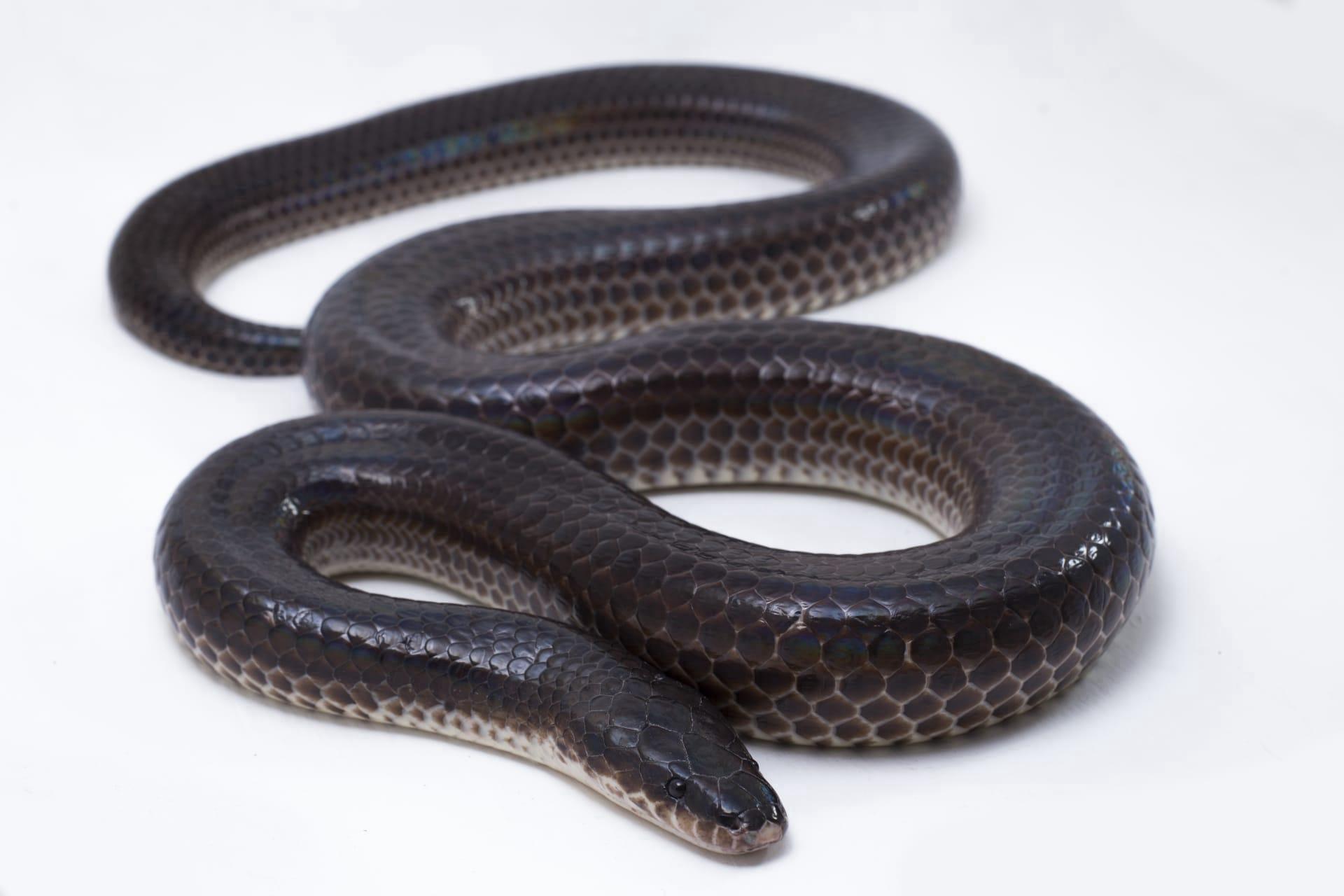1
Black Rat Snakes, known for their impressive length, can grow to an astounding 6 feet, sometimes even reaching 8 feet! These snakes are among the largest in North America. Their size helps them in their arboreal lifestyle, as they skillfully climb trees to hunt or escape predators. Their climbing ability is so proficient that they can scale vertical brick walls or slip into bird boxes to snatch eggs.
Another intriguing aspect of Black Rat Snakes is their defensive behavior. When threatened, they don't immediately resort to biting. Instead, they perform an elaborate bluff. They coil their bodies, vibrate their tails rapidly in dry leaves, mimicking the sound of a rattlesnake. This clever mimicry often scares away potential threats. Additionally, they may release a foul-smelling musk as a deterrent, a common defense mechanism among snakes.

2
Black Rat Snakes are master hunters and primarily feed on rodents, which makes them a farmer's friend. They play a crucial role in controlling the rodent population, thereby helping to prevent crop damage and the spread of diseases associated with these pests. An adult Black Rat Snake can consume a large number of rodents in a year, significantly impacting the local ecosystem.
Despite their name, Black Rat Snakes are not always black. They display a remarkable range of colors and patterns throughout their life. Juveniles are gray with black patches, which gradually darken as they mature. In some regions, they may retain a hint of their juvenile pattern, leading to a more brownish appearance in adults. This color variation is a fantastic example of how environment and genetics interplay in the animal kingdom.

3
Black Rat Snakes have a unique way of mating. During the spring, males engage in 'combat dances' with other males to vie for the attention of a female. These dances are non-violent and involve the snakes intertwining and rising off the ground, almost as if they are trying to 'size each other up'. The winner gets the opportunity to mate with the female, ensuring that the strongest genes are passed on to the next generation.
Their eggs are another wonder. Females lay clutches of up to 30 eggs, which they often deposit in decomposing vegetation or man-made structures like compost heaps. These locations provide the necessary warmth and humidity for incubation. Intriguingly, the mother does not stick around to protect the eggs, a common trait among many snake species. The eggs hatch in about two months, and the hatchlings are fully independent from birth, ready to fend for themselves.

4
Black Rat Snakes have a long lifespan compared to many other reptiles. In the wild, they can live for up to 20 years, while in captivity, some have been known to live over 30 years. This longevity is quite impressive, considering the various predators and environmental challenges they face. It also allows them to be a stable presence in their ecosystem, maintaining the balance between predator and prey over many years.
Surprisingly, Black Rat Snakes can go for a considerable time without eating. They can survive for up to two years without a meal, although this is not typical. This ability is particularly useful during the winter when they brumate (a form of hibernation for reptiles) and food is scarce. During brumation, their metabolic rate drops significantly, reducing their need for food. This adaptation is a testament to their resilience and ability to survive in various environmental conditions.

5
Black Rat Snakes are non-venomous and generally docile, posing little threat to humans. However, their presence can be intimidating due to their size and sometimes aggressive display when cornered. It's important to remember that these snakes are more interested in escaping than attacking. Their role in controlling pests makes them beneficial in human-inhabited areas, although they are often misunderstood and unnecessarily feared.
Lastly, Black Rat Snakes contribute to scientific research. Due to their adaptability and widespread presence, they have become subjects in various ecological and genetic studies. Research on their habitat preferences, diet, and behavior helps scientists understand broader ecological patterns and contributes to conservation efforts. This makes them not only fascinating creatures but also valuable to our understanding of the natural world.